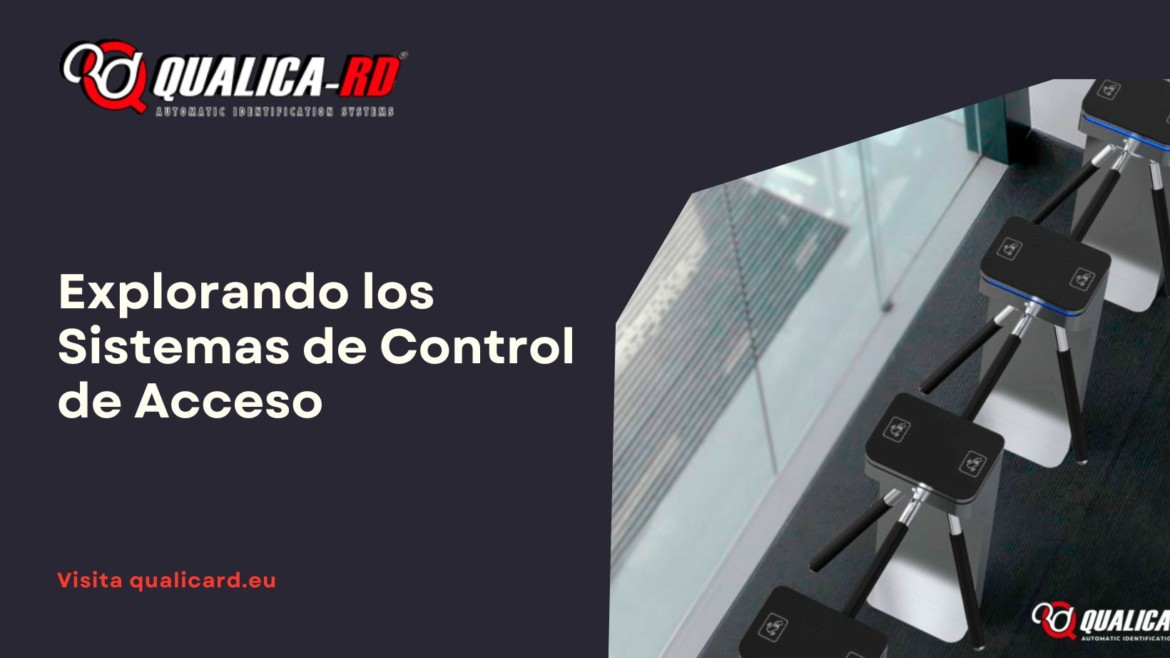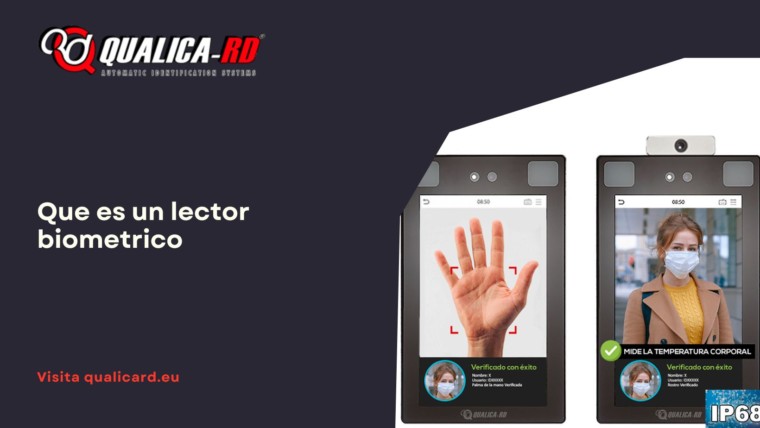Exploring Access Control Systems: Security and Technology at the Service of Your Company or Event – In a world where security and efficiency are paramount, access control systems are the ultimate solution for managing who enters and leaves your premises. Whether it’s to safeguard a company’s assets or to ensure the smooth running of an event, these systems use the latest technology to give you the peace of mind you need. Join us on this journey as we explore how the proper implementation of an access control system can transform the security and operability of your work environment or event.
Introduction to Access Control Systems
In the modern era, where security has become an undisputed priority, access control systems emerge as key technological solutions to ensure the protection of our companies and events. These tools not only offer efficient control over who enters and leaves our facilities, but also incorporate an additional layer of intelligence and adaptability to the specific needs of each environment.
The implementation of an access control system can range from simple solutions, such as entry cards and numerical codes, to more advanced technologies, including biometrics and facial recognition. The choice of the right system depends on several factors, such as the level of security required, the number of users and the particular characteristics of the space to be protected.
In addition, it is essential to note that the integration of these systems into an organization’s technological ecosystem brings benefits that go beyond physical security. From the optimization of resources to the improvement in data management and user experience, access control systems are positioned as fundamental allies in the search for efficiency and security.
Types of Access Control Systems
In the vast world of security, access control systems play a key role in ensuring protection in both business environments and events of various kinds. These technological solutions, designed to regulate entry to restricted areas, are diversified in a wide range of options, each adapted to specific needs. From traditional systems using magnetic cards to modern solutions incorporating biometric recognition and proximity technologies, choosing the right system can mean the difference between effective security and unwanted vulnerabilities.
Biometric systems, for example, offer a high level of security because they are based on unique characteristics of individuals, such as fingerprints, facial recognition or iris recognition. On the other hand, proximity card-based access control systems present an effective option for environments where speed of access is critical without sacrificing security. In addition, innovative mobile access control technologies are beginning to gain ground, allowing users to use their mobile devices as virtual keys.
Selecting the most appropriate type of access control system requires a detailed analysis of the specific needs of the entity, considering factors such as the desired level of security, the flow of people to be controlled and the integration with other existing security systems. The implementation of an efficient access control system not only reinforces physical security but also contributes to the creation of a safe and orderly work or event environment.
Physical Access Control
Today, Physical Access Control has become an integral part of security measures for businesses and events. This system, designed to limit entry to physical spaces to unauthorized persons, uses advanced technology to secure and protect facilities. From access cards to biometric systems, the variety of solutions available allows customization according to the specific needs of each entity.
The implementation of Physical Access Control systems not only enhances security, but also offers efficient management of people flow. This is particularly crucial in situations where it is essential to monitor and control who has access to certain areas, such as in the case of government institutions, corporations, and large events. The ability of these systems to integrate with other security solutions further enhances an organization’s ability to protect its assets and people.
In addition, the constant evolution in Physical Access Control technology opens up new possibilities for security and access management. Recent advances, such as facial recognition identification and mobile solutions, not only raise the level of security but also offer greater convenience and operational efficiency. These modern systems can adapt to changing security demands, ensuring that companies and events remain protected against emerging threats.
Electronic Access Control
In the current era, where technology and security are more closely intertwined than ever, Electronic Access Control has become a fundamental pillar for the protection of assets, both physical and digital, in companies and events. This system not only facilitates the management of who enters or leaves a venue, but also provides an additional layer of security by allowing constant, real-time monitoring of the facilities.
Advances in this area have led to the creation of increasingly sophisticated systems, ranging from access cards and numeric keypads to biometric technologies and facial recognition. These systems offer solutions that can be customized to the specific needs of each environment, ensuring that only authorized persons can access restricted areas. In addition, the incorporation of wireless and cloud-based technologies has greatly simplified the installation and maintenance of these systems, making them accessible to a wide range of users.
The implementation of a robust Electronic Access Control system not only improves physical security, but also raises the perception of security among employees, customers and visitors, creating a safer and more orderly work environment. When considering the implementation or upgrade of such a system, it is critical to evaluate the organization’s specific security and operational requirements to select the solution that best suits its needs.
Benefits of Implementing an Access Control System in your Company
Implementing an Access Control System in your company is not only a security measure, but also an intelligent strategy to improve management and operational efficiency. These systems allow you to effectively monitor and control access to your facilities, ensuring that only authorized personnel can enter restricted areas. The advanced technology behind these systems offers a solution adaptable to the specific needs of each company, regardless of its size or sector.
In addition, the implementation of such a system significantly reduces security risks, such as unauthorized access or theft of confidential information. It optimizes the flow of employees and visitors, eliminating bottlenecks during peak hours and thus improving overall productivity. The value of a secure and well-regulated work environment, where employees feel protected, cannot be underestimated, contributing in turn to increased job satisfaction and talent retention.
The flexibility of today’s Access Control Systems allows for easy integration with other security and back-office systems, creating a complete and cohesive security ecosystem. Their ability to generate real-time reports and store historical data facilitates evidence-based decision making, enabling dynamic operational adjustments that support business growth and innovation.
Security and Privacy Enhancement
In today’s digital age, security and privacy have become key concerns for businesses of all sizes. Implementing effective strategies to protect data and the integrity of physical spaces is more crucial than ever. Improving security and privacy not only protects against external threats, but also strengthens trust within the organization and among business partners. In this context, an effective solution lies in the adoption of access control systems, a measure that goes beyond simple entry and exit management.
Modern access control systems provide an additional layer of security by authenticating and authorizing individuals, ensuring that only those with the appropriate permissions can access restricted areas. This personalization of access not only enhances security by limiting exposure to potential risks, but also contributes significantly to privacy by protecting sensitive information from being accessed by unauthorized personnel. In addition, the ability to monitor and log activity in real time provides visibility and full traceability, key elements for proactive security management and rapid response to any incident.
Therefore, investing in an advanced access control system is a strategic decision that boosts security and privacy within the enterprise. This improvement is not only a pillar for protection against threats, but also strengthens the company’s reputation, an invaluable asset in today’s competitive market. Ultimately, adapting to innovative access control technologies is a step towards efficient management, a comprehensive security culture, and a firm commitment to protecting the company’s most valuable assets: its people, its information and its infrastructure.
Operational Efficiency and Cost Reduction
The implementation of access control systems has become an essential strategy for improving operational efficiency and reducing costs in today’s businesses. By automating the entry and exit processes, these systems not only offer a higher level of security but also streamline daily operations, allowing for more effective control over resources.
With the adoption of advanced technology, such systems facilitate access management, eliminating the need for manual supervision and significantly reducing the margin of error. This automation leads to time optimization and improved staff allocation, which contributes to more efficient time management and a significant reduction in operating costs.
In addition, the ability to integrate these systems with other technology platforms broadens their impact on operational efficiency. It enables the creation of safer and more productive work environments, where accessibility can be precisely controlled, adjusting access levels according to the specific needs of each area or department, and consequently improving internal coordination and communication.
In conclusion, the implementation of access control systems is not only a security measure, but a strategic investment that enhances operational efficiency and contributes to cost reduction in the corporate environment. Its ability to adapt and respond to a company’s changing needs ensures that it continues to deliver long-term benefits, facilitating sustainable and competitive growth.
Use Cases: Events and Companies
Access control systems play a crucial role in both event and corporate environments, providing security and operational efficiency. In the context of events, these systems can effectively manage the entry of attendees, ensuring that only those with authorization can access designated areas. This not only improves security but also optimizes the attendee experience, avoiding crowds and facilitating the flow of people.
On the other hand, in the enterprise environment, access control systems are essential to protect assets and ensure the safety of employees. They allow monitoring and control of who enters and leaves the premises, providing a detailed record of activity. In addition, these systems can be configured to restrict access to specific areas within a company, ensuring that only authorized personnel can enter sensitive or high-security areas.
The implementation of these systems offers tangible benefits, such as reduced security risks and increased operational efficiency. In events, they facilitate crowd management and access to services, while in companies, they strengthen perimeter security and the protection of sensitive data. Thus, in both events and enterprises, the adoption of access control systems represents a step forward towards the modernization and optimization of security management.
How to Choose the Right Access Control System
When choosing the right access control system, it is essential to consider software integration with other security systems, such as video surveillance and visitor management. This integration provides centralized security management and facilitates the identification of suspicious events by correlating live images with access logs. It also enables the adoption of emerging technologies, such as facial recognition, which can further strengthen security. Proper installation and maintenance are crucial to ensure the long-term effectiveness of the system, and it is advisable to have trained professionals for these purposes. It is also important to consider both initial and long-term costs, including hardware, software, maintenance and upgrades.
When it comes to readers, it is vital to choose those that fit your company’s specific security and traffic needs. Biometric readers offer high security by validating unique identities, such as fingerprints or facial recognition, but can be more expensive. Increasingly popular mobile credential readers require devices that support BLE, NFC or WiFi. Multifactor readers combine multiple verification technologies for enhanced security. The choice should also consider communication protocols between readers and controllers, such as Wiegand and OSDP, the latter offering enhanced cybersecurity and advanced functionalities. Finally, the type of reader mounting (wall-mounted, slim base or keypads) will also influence the decision, based on available space and the specific needs of the access point.






